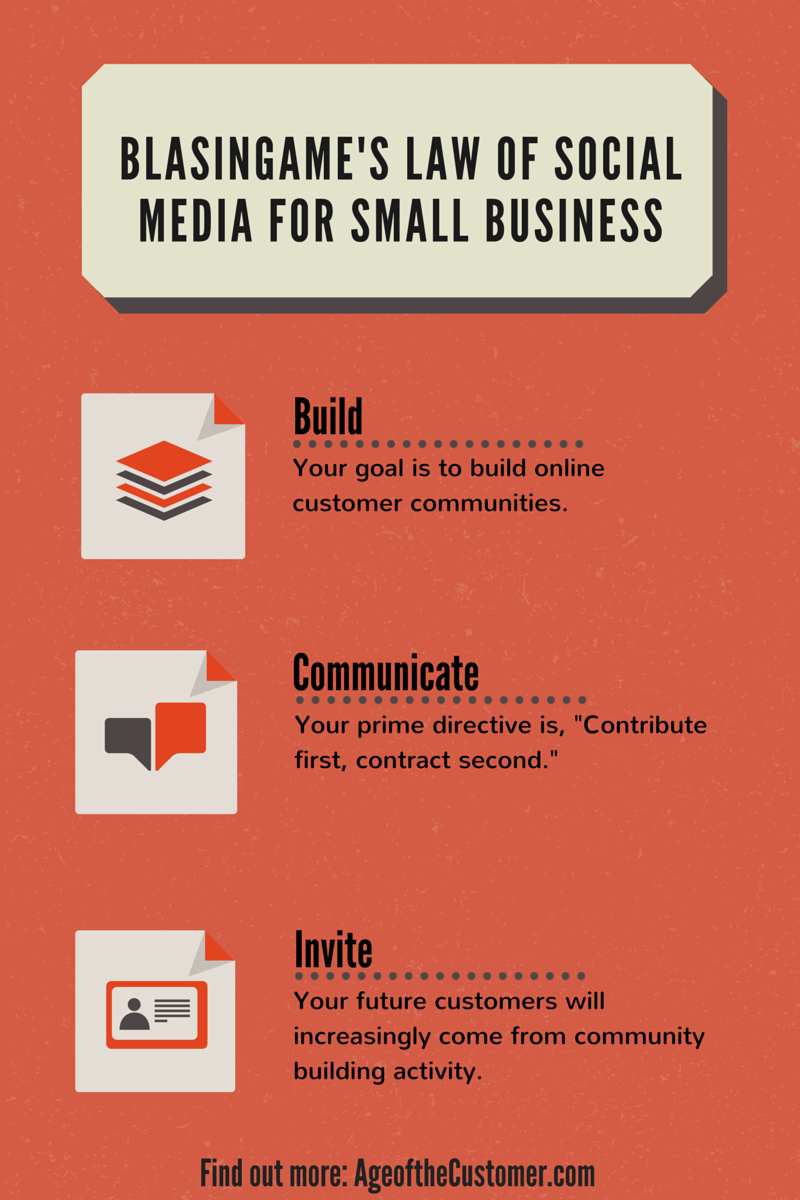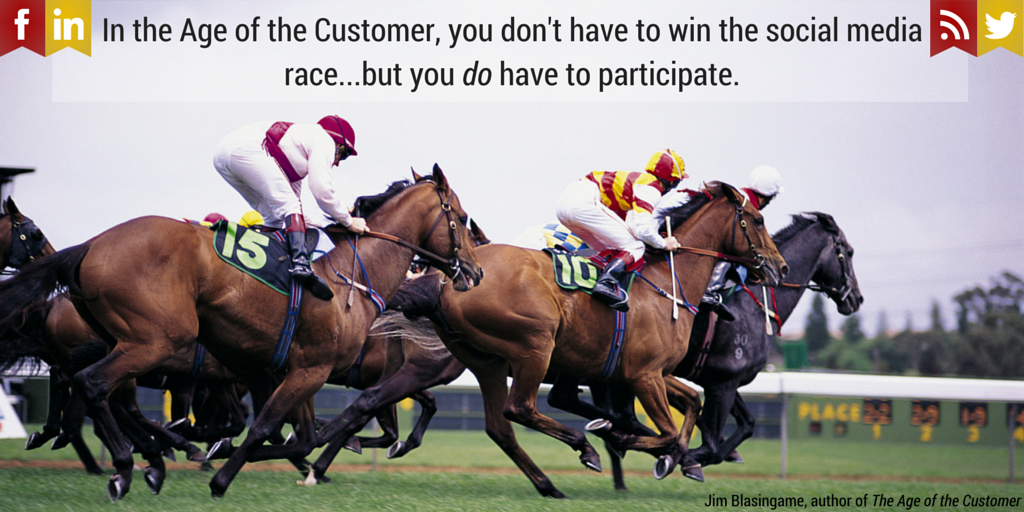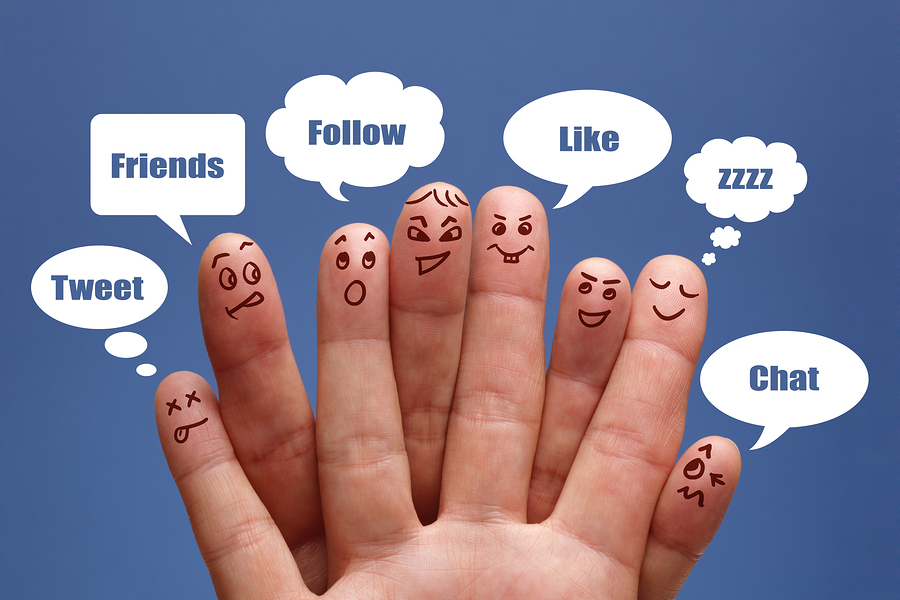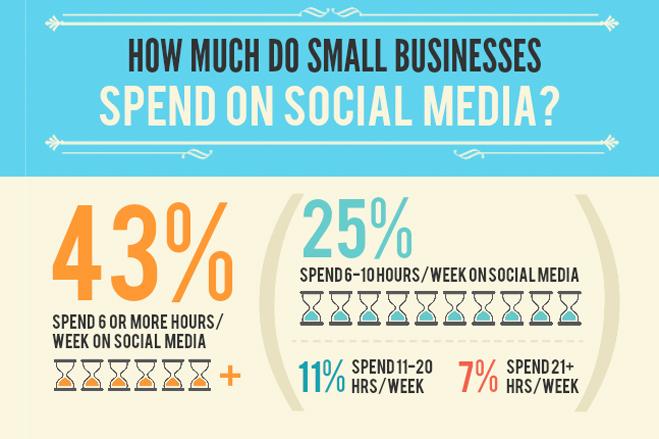It’s time to adapt to the new age of technology
 His technology was crude by modern standards, but it did what technology does: leverage the productivity of human beings. During the year Ford’s assembly line was first put in service, he wasn’t just using technology he was creating it. He also turned 50.
His technology was crude by modern standards, but it did what technology does: leverage the productivity of human beings. During the year Ford’s assembly line was first put in service, he wasn’t just using technology he was creating it. He also turned 50.The list of technology options today is long and growing and available in features-rich products that support and improve virtually every business task. How much are you adopting technology to help you leverage the humans in your organization?
Create online customer communities for your small business
A “craze” is something that takes popular culture by storm. A “fad” is a craze that doesn’t last. Social media is currently a craze, but it’s not a fad. And the question is not whether this craze will last, but rather, what will it look like over time and why should a small business care? Consequently, let’s establish a few “social media” points.
Strictly speaking, “social media” is the technology that makes online community building possible, not the community itself. It allows for the creation of and service to online communities, where dialogue and interaction among community founders and members are possible. Ultimately, the term “social media” in a business application should become the more accurate term, “online customer communities.”
In defining community, Webster uses words like association, fellowship, like-mindedness and shared interests. When building online customer communities, we should remember these words. Every small business should create online customer communities, of which there are two primary examples:
1. A company’s profile pages on sites like Facebook, Twitter, etc. Your company leverages these companies’ platforms. These sites are free but have limited flexibility.
2. Communities founded and hosted by your company, oriented around relationships with customers and prospects. An online community is established when customers subscribe to one or more of your channel offerings in order to receive your information.
A channel is a syndication tool or method of content delivery and service to a community. For example, real simple syndication (RSS), a blog, an email newsletter (ezine), a text blast and Twitter are channel tool examples, through which businesses and their communities exchange information.
Merely having a website isn’t practicing community building any more than owning a piano makes you a musician. But a website can become a platform from which you launch and serve online communities.
There is one critically important thing for a founding company to understand about both of the online customer community types: the company cannot control community behavior. Members – customers and prospects – control the community. A founding company can only create the community and influence it by establishing community values, then serving it via the channels and information it offers, which are requested by members.
Always remember: Customers control online communities, not companies.
Differentiating between users and customers
Social media platforms have rocked the online world in just a few frenzied years by introducing new community building possibilities for people and customer connection opportunities for business.
These are heady times for social media visionaries who have created a wave of viral excitement. This is the realm of entrepreneurs who worship at the throne of possibilities, where mistakes successfully identify what doesn’t work and fun is a best practice.
Now, like Gates and Jobs before them, social media entrepreneurs are following the path of past high-growth enterprises by hitching their wagons to Wall Street’s star through an initial public offering (IPO) of stock. But in doing so, companies like Facebook enter the world of very sharp pencils.
This is the realm of fish-eyed bankers and fickle fund managers who worship at the throne of results. They demand fealty, and an audience every 90 days to explain why actual operating numbers from the real marketplace missed – by one cent – what green-eye-shade analysts had divined with their theoretical financial models. And faster than you can “Like” a photo on Facebook, it becomes clear that mistakes in this realm come at a high cost, possibilities are not possible and fun isn’t in the budget.
Unlike Microsoft and Apple, which actually create products customers pay for, social media patrons aren’t paying customers, but users. And the only thing more fickle than a fund manager is an Internet user, which is why so many jaundiced eyes are being cast on social media IPOs.
We wanted to know what our small business audience thought about Facebook’s impending IPO, so we asked: “As Facebook makes plans to go public, do you think its stock will be a good investment?” Here’s what you told us.
On one end, less than one-in-ten of respondents said, “Facebook stock will do well short and long-term,” while at the other end, 16% believe, “Like other social media stocks, Facebook stock will be a loser.” The big group in the middle, 75%, allowed that “Facebook stock may do well for a year or so, but not long-term.”
Such skepticism isn’t about social media activity itself. Because what individuals and businesses are really doing on these platforms is creating communities, and online communities are here to stay.
But small business owners, like Wall Street, know there’s a difference in projecting the value of a customer and that of a user. One pays you money and the other pays you a visit.
Monetizing a user is not the same as monetizing a customer.
The Age of the Customer®, Part 1: Can social media be dangerous?
Can social media actually be dangerous to your small business? Absolutely.
“Blasphemy!” you cry. “Heretic!” you say.
Guilty as charged. Remember, Martin Luther was a heretic with a blasphemous message. Today’s heretic might be tomorrow’s prophet.
Being successful with any of the social media communities is as easy as falling off of a log – for individuals; but for small businesses – not so much.
The goals of these two groups are very different: Individuals use social media primarily to connect and share. Businesses participate in social media communities to pursue a marketing strategy in these target-rich environments.
For professional services providers, like consultants, trainers, writers or any venture that sells information and ideas, social media is pretty intuitive, completely logical and often highly effective. But many classicMain Street small businesses, like a restaurant, dry cleaners, contractor, etc., often struggle to create an effective social media strategy.
Unfortunately, some business owners, especially start-ups, get caught up in the social media whirlwind and, since it’s all the rage, actually believe that spending time “connecting” online will cause sales dollars to roll in. This is where the danger lies because social media activity can become a thief that steals time from effective marketing practices. Effective means those strategies that are known to result in sales.
Even so, social media, with all the attendant sites and applications, may be a craze, but it isn’t a fad. It is real, and it will last. And just like the evolution of websites, in time businesses will figure our how to use social media as an effective tool. But for the time being, some businesses have figured it out, while many are still uncertain about how to produce a social media return on investment.
In order to actually have a social media strategy that isn’t dangerous, practice both/and rather than either/or. Continue to execute your traditional marketing strategy, while simultaneously getting involved in and learning about the 21st century social media universe.
Get a Facebook page and use it, but don’t live there. Acquire a Twitter and do some following, but don’t get sucked into the time drain. Link up on LinkedIn, but don’t forget to unlink.
Allow me to demonstrate that I’m an equal opportunity heretic: As obnoxious as it may be today, social media will increasingly become a significant element of any successful small business marketing strategy.
Write this on a rock… Use social media like any other business tool — prudently.
The original social media is face-to-face
Ever since Samuel Morse invented the telegraph in 1844, each new communication technology has sought relevance in an increasingly noisy universe.
 Today there is actual management pain from an embarrassment of riches of communication options. This discomfort is especially keen when connecting with customers electronically: Should you email or send a text message? How about IM? And when should you use one of the social media options?
Today there is actual management pain from an embarrassment of riches of communication options. This discomfort is especially keen when connecting with customers electronically: Should you email or send a text message? How about IM? And when should you use one of the social media options?
But from telegraph to telephones to Twitter, there has been one constant that has retained its relevance and impact: in person connection. As I’ve said before, face-to-face contact is the original social media.
For small businesses, social media adoption has always needed to be tempered by ROI reality. And as useful as each new communication resource proves to be, they are after all, merely tools to leverage our physical efforts, not eliminate the basic human need for interacting in person. Consider this story:
A sales manager (whose gray hair was not premature) noticed the sales volume of one of his rookies was below budget for the third consecutive month. Of course, he had questioned the numbers previously but had allowed his better judgment to be swayed by plausible explanations. Now there was a downward trend.
Upon more pointed probing, the manager discovered the reason for loss of production: too much electronic contact and not enough face-to-face. The rookie was relying too heavily on virtual tools and missing opportunities to meet with customers in person.
It turns out lack of training and rubber-meets-the-road experience left the rookie uncomfortable and unprepared to ask for and conduct face-to-face meetings, like proposal presentations. Consequently, he wasn’t benefiting from how the success rate of growing customer relationships can increase when certain critical steps are conducted in person. This manager immediately developed a training program that established standards for how and when to integrate all customer connection tools, including the face-to-face imperative.
If your sales could use some help trending upward, perhaps your salespeople need training to get in front of prospects and customers, particularly at the critical step of gaining an initial meeting. Like the manager above, you may need to establish specific and measurable standards for when face-to-face meetings should take place.
There is one connection option that has borne witness to all of the others and continues to be as powerful as ever: face-to-face.
“Follow me home” – a gift from customers
First, let’s establish two maxims: one classic, one new.
Classic: The cardinal rule of customer acquisition – it’s not your customer’s job to keep your business top-of-mind, it’s yours.
New: Your website is becoming less of a destination and more of a distribution center – develop a strategy that doesn’t depend upon prospects and customers returning to your homepage.
 Every business owner knows it’s easier to keep a customer than find a new one. But with all of the online options and commercial clutter, keeping their attention is getting harder.
Every business owner knows it’s easier to keep a customer than find a new one. But with all of the online options and commercial clutter, keeping their attention is getting harder.
The good news is for every example of how technology makes business more complicated, there is a corresponding tool or application that increases efficiency and productivity.
The best example for how to stay on the radar screen of people who already know you – users, prospects and customers – is to practice what I call the “Follow me home” strategy.
Once someone determines they like your business, they’re increasingly willing to give permission for you to “Follow me home” with digital information and content, by email (newsletters), texting (updates), social media (useful content), etc.
“Follow me home” supports three critical elements in 21st century customer relationships.
Emotional: At the heart of “Follow me home” is trust that a business won’t abuse this privilege. This is a gift – value, protect and perform on this.
Practical: “Follow me home” conveys that you understand people have other options, are very busy and want help staying connected.
Technical: Elements on your website that make “Follow me home” easy (“Subscribe to our free newsletter”, “Follow us on Twitter, etc.), score the online hat trick: values, thought-leadership and technical capability.
“Follow me home” is good for your business in four ways:
- You’ve been invited to connect with regular, useful content and appropriate marketing messages.
- Since it’s a natural law that a prospect has to see several impressions before converting to a
 customer, “Follow me home” becomes an effective and efficient conversion practice.
customer, “Follow me home” becomes an effective and efficient conversion practice. - “Follow me home” is one of the best ways a user pre-qualifies themselves as a prospect.
- New technologies make delivering on “Follow me home” easier than ever.
Make it easy for users, prospects and customers to give you permission to, “Follow me home.”
“Follow me home” is a buying signal waiting to happen. Are you listening?
The original social media is face-to-face
Ever since Samuel Morse invented the telegraph in 1844, new communication technologies have sought relevance in an increasingly noisy universe.
Today there is actual management pain from an embarrassment of riches of communication options. This discomfort is especially keen when connecting with customers electronically: Should you email or send a text message? How about IM? And when should you use one of the social media options?
 But from telegraph to telephones to Twitter, there has been one constant that has retained its relevance and impact: in person connection. As I’ve said before, face-to-face contact is the original social media.
But from telegraph to telephones to Twitter, there has been one constant that has retained its relevance and impact: in person connection. As I’ve said before, face-to-face contact is the original social media.
For small businesses, social media adoption has always needed to be tempered by ROI reality. And as useful as each new communication resource proves to be, they are after all, merely tools to leverage our physical efforts, not eliminate the basic human need for interacting in person. Consider this story:
A sales manager (whose gray hair was not premature) noticed the sales volume of one of his rookies was below budget for the third consecutive month. Of course, he had questioned the numbers previously but had allowed his better judgment to be swayed by plausible explanations. Now there was a downward trend.
Upon more pointed probing, the manager discovered the reason for loss of production: too much electronic contact and not enough face-to-face. The rookie was relying too heavily on virtual tools and missing opportunities to meet with customers in person.
It turns out lack of training and rubber-meets-the-road experience left the rookie uncomfortable and unprepared to ask for and conduct face-to-face meetings, like proposal presentations. Consequently, he wasn’t benefiting from how the success rate of growing customer relationships can increase when certain critical steps are conducted in person. This manager immediately developed a training program that established standards for how and when to integrate all customer connection tools, including the face-to-face imperative.
If your sales could use some help trending upward, perhaps your salespeople need training to get in front of prospects and customers, particularly at the critical step of gaining an initial meeting. Like the manager above, you may need to establish specific and measurable standards for when face-to-face meetings should take place.
There is one connection option that has borne witness to all of the others and continues to be as powerful as ever: face-to-face.









